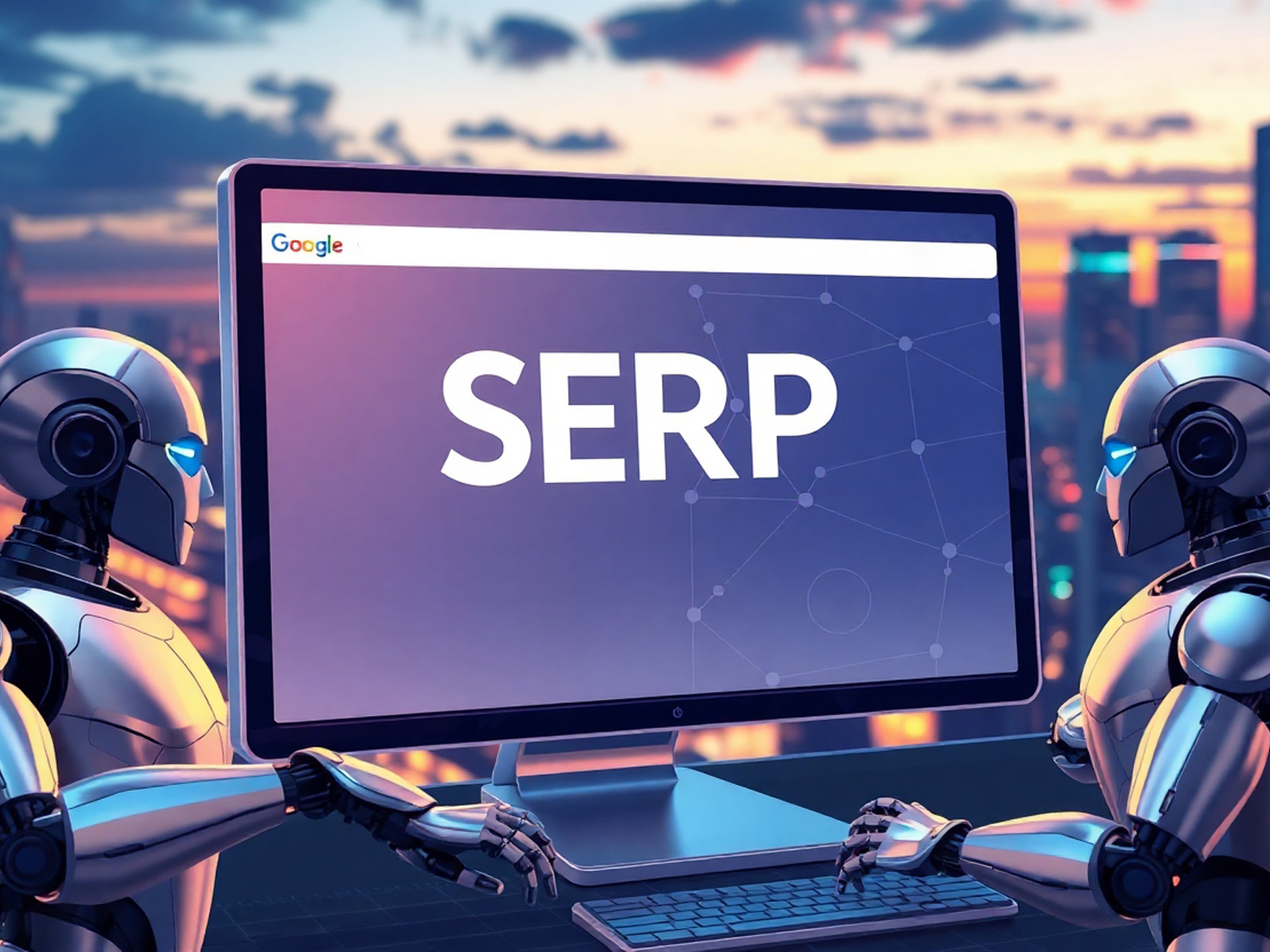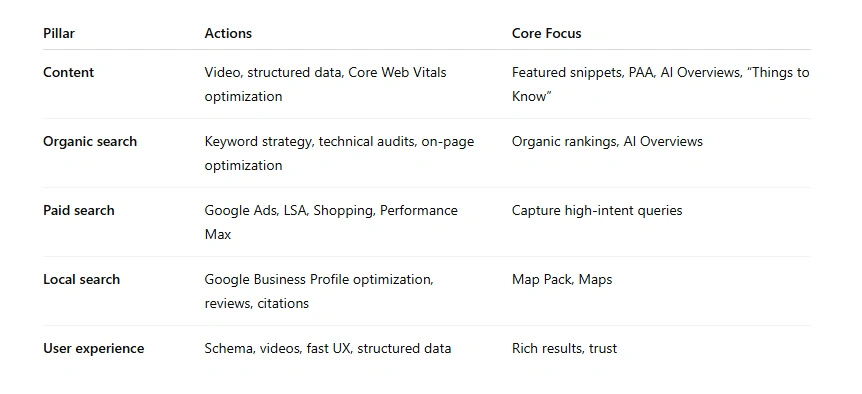
The customer journey no longer belongs to just one person

How conversational AI is changing the economics of paid search

How duplicate content reduces brand visibility in AI Search

6 minutes
How to win in the AI search era. The five pillars of the search visibility framework help maximize SERP coverage and conversions.
Search is experiencing its biggest transformation in decades, and your SEO strategy must keep up with these changes.
The reality is this: even when you secure a top organic position, you’re competing with AI Overviews that cut clicks before users even reach your site.
The good news: while the SERP has become more complex, it has also become richer.
Brands that are winning are the ones orchestrating total visibility across multiple touchpoints, capturing every high-intent moment.
This is exactly what the search visibility framework is designed for — my approach to thriving in today’s AI-driven, multi-format search landscape.
This article explains the framework in full, from its core principles to its five pillars and ways to measure their impact.
Read more about why search still only “speaks” a few languages.
The framework is built on omnipresence — owning multiple placements on page one to capture user intent in various scenarios:
The goal is simple: appear in as many SERP features as possible for your target queries, including:
This is not a completely new concept. However, in the new SEO era, brands need to push this strategy even harder, especially as AI Overviews capture a growing share of clicks.
We are now acutely aware of the impact of Google AI Overviews on search results.
Marketing teams are dealing with yet another SERP feature that drives zero clicks.
According to Pew Research Center, in March 2025, up to 58% of users conducted at least one Google search that triggered an AI Overviews summary.
What happened next?
Google responded by calling the study methodologically flawed and claimed they “consistently direct billions of clicks to websites daily” without seeing significant drops in aggregate traffic.
However, independent research paints a different picture:
The dual challenge for brands now is:
The search visibility framework was built specifically for this.
The framework is a systematic approach to SEO, covering five key areas: content, organic search, paid search, local search, and user experience.
Their real power comes from how they work together to create multifaceted visibility for your brand.

Content acts as the connective tissue for all other pillars.
Traditional SEO remains foundational. Strong technical health, precise keyword targeting, and on-page optimization build the relevance that fuels every other pillar.
Paid search provides fast visibility for competitive queries and fills coverage gaps where organic rankings may fall short.
Local SEO ensures geographic dominance: optimizing Google Business Profiles, managing reviews, and leveraging local citations.
UX ensures that every click — from AI Overviews, organic, paid, or local — has the highest chance of conversion. Fast, intuitive, and trustworthy interfaces are critical.
When combined, these five pillars create a multifaceted approach:
Together, they compound visibility in the SERP.
Read more about why “looking everywhere” does not mean “being everywhere”.
Classic ranking data is still valuable, but not sufficient.
To measure ROI of the framework, track your footprint across AI Overviews, SERP features, and funnel stages.
Beyond raw clicks, monitor signals of influence like assisted traffic, brand mentions, and engagement, especially when click-through rates decline but your brand remains prominent.
Consolidating this into a single SEO dashboard (e.g., Looker Studio) helps identify underperforming assets and reallocate efforts efficiently.
Search is no longer a straight path from query to click. Users and publishers navigate a maze of AI answers and competing SERP features.
The search visibility framework is a way to restructure your SEO program to capitalize on every opportunity the SERP offers, instead of focusing only on what’s lost.
Read this article in Ukrainian.
Say hello to us!
A leading global agency in Clutch's top-15, we've been mastering the digital space since 2004. With 9000+ projects delivered in 65 countries, our expertise is unparalleled.
Let's conquer challenges together!
performance_marketing_engineers/
performance_marketing_engineers/
performance_marketing_engineers/
performance_marketing_engineers/
performance_marketing_engineers/
performance_marketing_engineers/
performance_marketing_engineers/
performance_marketing_engineers/